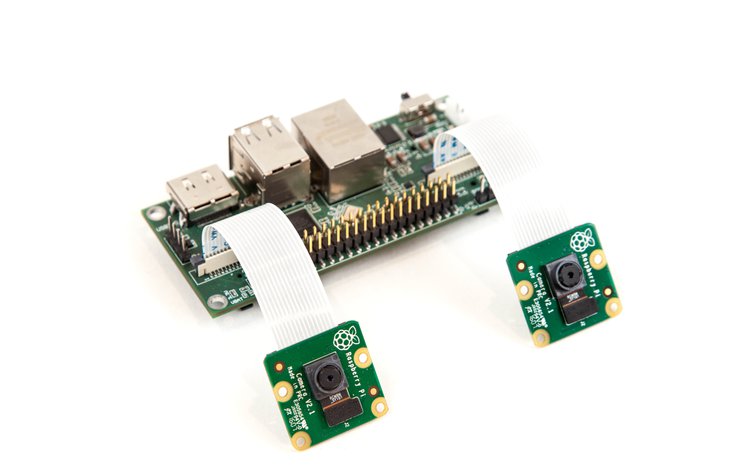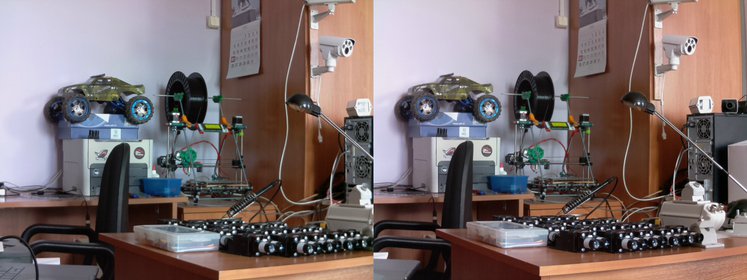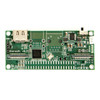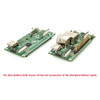
StereoPi Slim Edition
| SKU: | 1616 |
StereoPi Slim Edition - Perfect for DIY ninjas and those wanting to embed StereoPi in a tight space. This board is the same as the standard edition, but without all the bulky connectors - the Ethernet RJ45 jack, GPIO header, and dual USB Type-A connector have not been populated. To use this board, you will need your own Raspberry Pi Compute Module, cameras, camera ribbon cables, and power cable.
The board comes with two short power cables.
From spatially aware robots to drone livestreaming
StereoPi is an open source stereoscopic camera based on Raspberry Pi. It can capture, save, livestream, and process real-time stereoscopic video and images. StereoPi opens up countless possibilities in robotics, AR/VR, computer vision, drone instrumentation, panoramic video, and more.

StereoPi is easy to use with other familiar tools.
We’ve already made many demos of StereoPi integrating with other tools, including:
- YouTube: livestream 3D video over the Internet
- Oculus Go: livestream 3D video directly to a VR headset
- OpenCV: build real-time depth maps
- ROS: create a spatially aware robot
- Hugin: create 360° panoramic photos and videos
- Wifibroadcast: wirelessly livestream 3D video from a drone
Example Video & Photo
The above video was captured by running this simple command from a Raspbian terminal:
raspivid -3d sbs -w 1280 -h 480 -o 1.h264
Taking a stereoscopic image is just as easy using:
raspistill -3d sbs -w 1280 -h 480 -o 1.jpg

Stereo photo sample from StereoPi
Features & Specifications
- Raspberry Pi Compatibility:
- Raspberry Pi Compute Module 1
- Raspberry Pi Compute Module 3
- Raspberry Pi Compute Module 3 Lite
- Raspberry Pi Compute Module 3+ 8 GB / 16 GB / 32 GB eMMC flash
- Raspberry Pi Compute Module 3+ Lite
- Dimensions:
- width x length: 90 mm x 40 mm
- height: 23 mm (standard edition) / 15 mm (slim edition)
- Video:
- input: two 15-pin CSI-2 camera connectors
- output: HDMI
- Camera Support:
- Raspberry Pi camera V1 (OV5647 sensor)
- Raspberry Pi camera V2 (Sony IMX 219 sensor)
- HDMI video capture module (single mode, on Toshiba TC358743XBG chip)
- Connectivity:
- GPIO: 40-pin classic Raspberry Pi header
- USB: 2 x USB Type-A, 1 x USB pin header
- Ethernet: RJ45 jack
- Storage:
- microSD card slot (accessed by Raspberry Pi CM3/3+ Lite)
- Power:
- 5 VDC input via two-pin header
- manual power switch
- Software:
- firmware update via Micro USB connector
- runs standard Raspbian
- excellent Python support
- tons of example code





